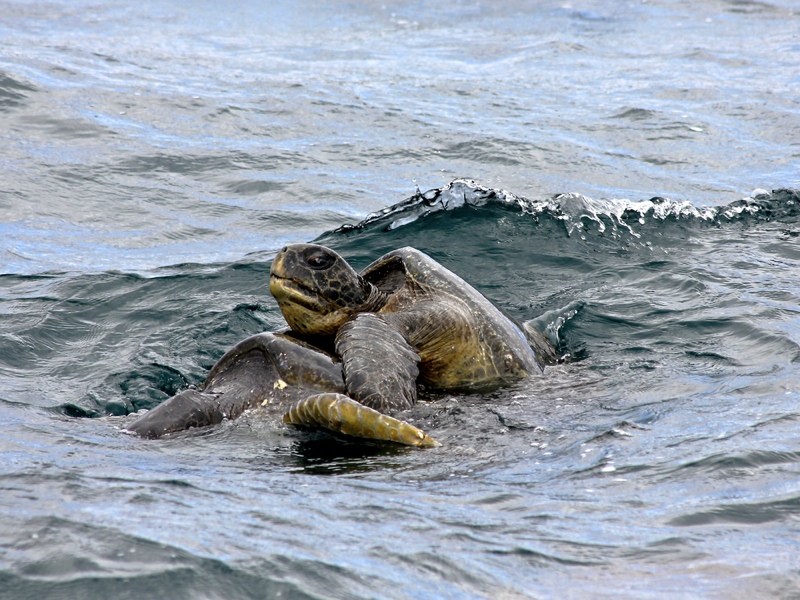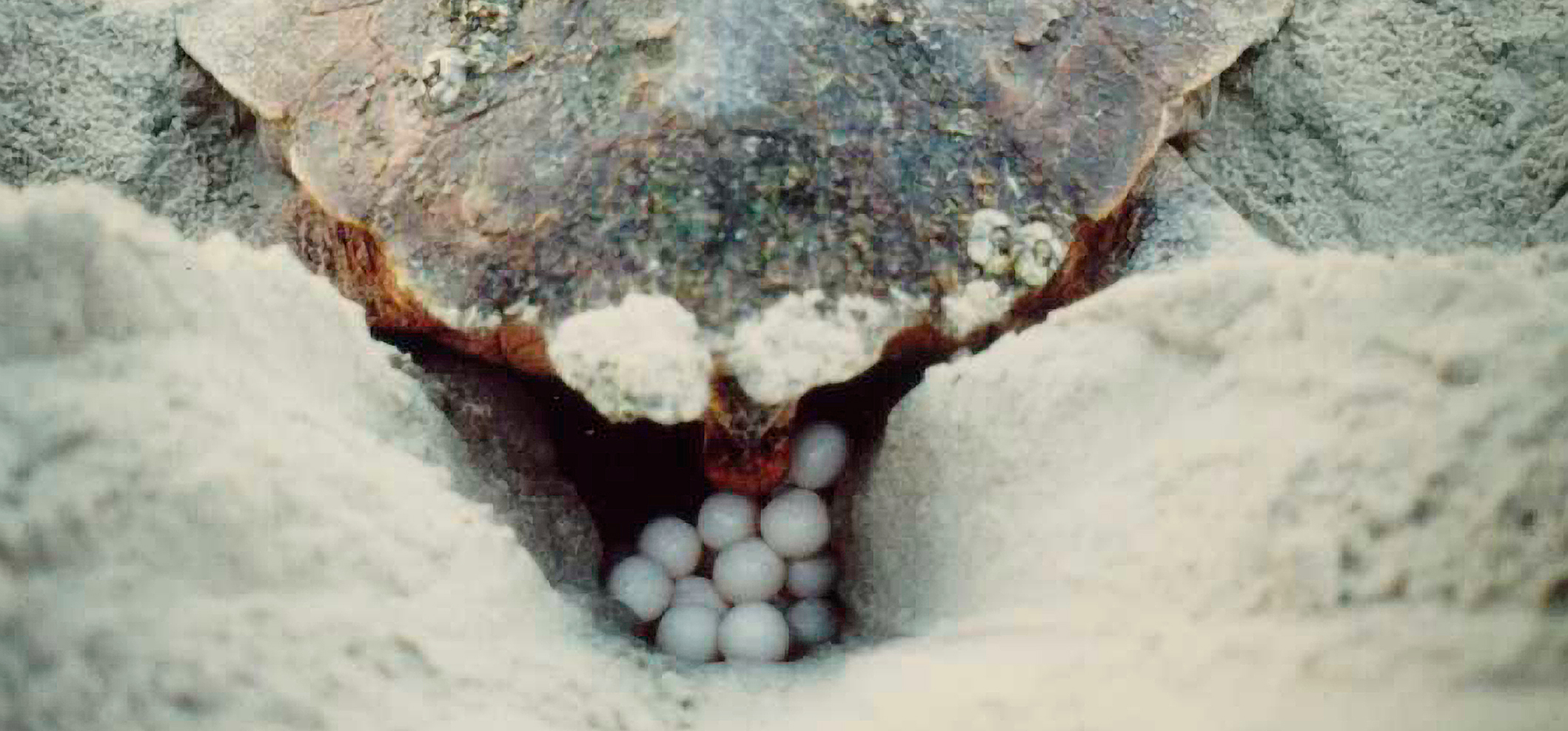Sea turtles reproduce through mating in the water, with the male fertilizing the female’s eggs. The female then lays her eggs on sandy beaches, where they hatch after a few months.
Sea turtles have a unique and fascinating reproduction process that plays a vital role in maintaining their populations. These ancient marine creatures face numerous threats during their reproductive cycle, from predation to habitat destruction. Understanding the intricacies of sea turtle reproduction is crucial for conservation efforts aimed at protecting these endangered species.
By safeguarding their nesting sites and reducing human impact, we can help ensure the continued survival of these majestic creatures for future generations to admire and appreciate.

Credit: www.livescience.com
Life Cycle Of Sea Turtles
Sea turtles have a fascinating life cycle that begins with their nesting behavior and egg development. Understanding the stages of a sea turtle’s life cycle is crucial for their conservation and protection. Let’s delve into the nesting behavior and egg development of these remarkable marine creatures.
Nesting Behavior
Sea turtles typically return to the same beach where they were born to lay their eggs. This behavior, known as natal homing, ensures the continuation of their species. Female sea turtles emerge from the sea and use their flippers to dig a hole in the sand, where they deposit their eggs. After carefully covering the nest, they return to the ocean, leaving the eggs to hatch on their own.
Egg Development
Once the eggs are laid, they undergo a period of incubation, which varies based on the species and environmental conditions. The temperature of the sand plays a crucial role in determining the sex of the hatchlings. Warmer temperatures typically result in female hatchlings, while cooler temperatures produce males. After the incubation period, the hatchlings use a special egg tooth to break out of their shells and make their way to the ocean, where they face numerous challenges in their early stages of life.
Mating Habits
Sea turtles have fascinating mating habits, which involve intricate courtship rituals and long migratory journeys. Understanding how sea turtles reproduce provides valuable insight into their behavior and the conservation efforts necessary to protect these magnificent creatures.
Migratory For Mating
Sea turtles are known for their impressive migratory journeys, traveling vast distances to return to their natal beaches for nesting. These migrations can span thousands of miles, with female sea turtles navigating back to the specific beaches where they hatched to lay their eggs. This instinctual journey is crucial for the continuation of the species, as it ensures that the next generation of sea turtles will have a suitable environment for hatching and survival.
Courtship Rituals
Before mating occurs, sea turtles engage in elaborate courtship rituals that often take place in the water. Male sea turtles will compete for the attention of females, displaying various behaviors to demonstrate their fitness and suitability as a mate. These rituals can involve elaborate movements, vocalizations, and physical displays as the male attempts to court the female. Once the female selects a mate, the pair will engage in the mating process, typically underwater, where fertilization occurs.
Nesting Process
Sea turtles reproduce through a nesting process where females lay eggs on sandy beaches. After mating at sea, they return to their birthplace to dig nests and deposit their eggs before covering them to incubate naturally. This crucial cycle is vital for the survival of sea turtle populations.
Sea turtles are fascinating creatures that have been around for millions of years. One of the most impressive things about them is their nesting process. The nesting process of sea turtles is crucial to their survival, and it involves several steps that are worth exploring. In this article, we will focus on the nesting process of sea turtles, including the selection of nesting sites and laying eggs.Selection Of Nesting Site
The nesting process of sea turtles begins with the selection of a nesting site. Female sea turtles will often return to the same beach where they were hatched to lay their eggs. This is because they are familiar with the area and know that it is a suitable place for nesting. However, if the beach is no longer suitable, they will search for another location. Sea turtles prefer beaches that are remote, quiet, and have soft sand. They also look for areas that are above the high tide line to ensure that their nests are not washed away by the ocean. Once a female sea turtle has found a suitable nesting site, she will begin the process of laying her eggs.Laying Eggs
The next step in the nesting process is laying eggs. Female sea turtles will dig a hole in the sand using their flippers to create a nest. They will then lay their eggs in the nest, covering them up with sand when they are done. The number of eggs laid by sea turtles can vary depending on the species, but it can range from 50 to 200 eggs per nest. Once the eggs are laid, the female sea turtle will carefully cover the nest with sand to protect the eggs from predators and the elements. The eggs will incubate in the sand for around 60 days, depending on the species and environmental conditions. In conclusion, the nesting process of sea turtles is a remarkable feat that involves careful selection of nesting sites and laying of eggs. By understanding this process, we can appreciate the importance of protecting sea turtle populations and their habitats.Incubation And Hatching
Sea turtles go through a remarkable process of incubation and hatching, ensuring the survival of their species. The journey from nesting to the emergence of hatchlings is an intricate and fascinating part of their life cycle. Let’s delve into the details of how sea turtles manage the critical stages of incubation and hatching.
Temperature Regulation
The incubation process of sea turtle eggs is heavily dependent on the temperature of the nesting environment. A warmer temperature generally leads to faster development, while cooler temperatures result in slower incubation. It is crucial for the eggs to be incubated within an optimal temperature range to ensure the healthy development of the embryos. Sea turtles exhibit remarkable adaptability in regulating the temperature of their nests by selecting suitable nesting sites and adjusting their nesting behaviors.
Emergence Of Hatchlings
Once the incubation period is complete, the momentous emergence of hatchlings begins. After weeks of development within the safety of their nests, the hatchlings instinctively make their way to the surface. This journey is filled with challenges as they navigate through the sand, utilizing their flippers to push through the layers above them. Upon reaching the surface, the hatchlings are greeted by the natural light of the moon and the ocean, guiding them towards their ultimate destination—the sea.
Challenges To Reproduction
Sea turtles face various challenges to reproduction, which can significantly impact their ability to maintain healthy population levels. From predation risk to human interference, these challenges pose serious threats to the survival of sea turtle species.
Predation Risk
Sea turtle nests are often vulnerable to predation, with natural predators such as raccoons, foxes, and birds preying on eggs and hatchlings. This predation risk can result in significant losses, reducing the number of hatchlings that successfully reach the ocean.
Human Interference
Human activities, including coastal development, pollution, and fishing practices, pose substantial threats to sea turtle reproduction. Coastal development can disrupt nesting habitats, while pollution can impact the health of nesting females and hatchlings. Additionally, fishing practices, such as bycatch in fishing nets, can lead to accidental capture and mortality of sea turtles.

Credit: www.nps.gov
Conservation Efforts
Sea turtles reproduce through a unique process that involves nesting on beaches. Conservation efforts play a crucial role in protecting sea turtle habitats and ensuring their survival. By safeguarding nesting sites and reducing threats, we can help these magnificent creatures thrive for generations to come.
Sea turtles are fascinating creatures that have been on earth for millions of years. These ancient reptiles are known for their remarkable nesting behavior, and the way they reproduce is truly remarkable. However, the survival of sea turtles is under threat due to human activities such as pollution, hunting, and habitat destruction. This is why conservation efforts are crucial for the survival of these magnificent animals.Protection Of Nesting Sites
One of the most important conservation efforts for sea turtles is the protection of their nesting sites. Female sea turtles return to the same beach where they were born to lay their eggs. However, these nesting sites are under threat due to coastal development, pollution, and predation. To protect these sites, conservationists work to establish protected areas, such as marine reserves, where sea turtles can nest safely. Additionally, beach patrols are established to prevent poaching of sea turtle eggs and to monitor nesting activities.Research And Monitoring
Another crucial conservation effort for sea turtles is research and monitoring. This helps conservationists to understand the biology and behavior of sea turtles, as well as the threats they face. Research and monitoring involve tracking sea turtles, monitoring their nesting activities, and collecting data on their diet and migration patterns. This information helps conservationists to develop effective conservation strategies and to monitor the success of their efforts.Conclusion
Conservation efforts are crucial for the survival of sea turtles. Protection of their nesting sites and research and monitoring are just two of the many ways that conservationists work to ensure the survival of these remarkable animals. By working together, we can help to protect sea turtles for future generations to enjoy.Global Impact
Sea turtles play a crucial role in the marine ecosystem, and their reproductive habits have a significant global impact. Understanding the ecological importance and the threats to their survival is essential for the conservation of these majestic creatures.
Ecological Importance
Sea turtles contribute to the health of marine ecosystems by maintaining the balance of various species. Their diet consists of sponges, jellyfish, and sea grass, which helps control the populations of these organisms. Furthermore, sea turtles aid in the dispersal of nutrients and play a vital role in the maintenance of coral reefs and seagrass beds.
Threats To Survival
Sea turtles face numerous threats to their survival, including habitat destruction, pollution, and climate change. Human activities such as coastal development and plastic pollution pose a significant risk to their nesting sites and foraging grounds. Additionally, accidental capture in fishing gear and poaching for their eggs, meat, and shells further endanger their populations.
Future Prospects
As sea turtles face numerous threats to their survival, it is crucial to consider the future prospects of their reproduction and conservation. This involves addressing various factors such as climate change adaptation and community involvement. By understanding these aspects, we can work towards ensuring the long-term viability of sea turtle populations.
Climate Change Adaptation
Sea turtles are highly sensitive to environmental changes, especially those related to climate. Rising temperatures can impact the sex determination of hatchlings, leading to skewed gender ratios. Additionally, sea level rise poses a threat to nesting beaches, potentially reducing available nesting sites. To adapt to these challenges, conservation efforts must prioritize habitat protection and temperature monitoring to mitigate the effects of climate change on sea turtle reproduction.
Community Involvement
Engaging local communities in sea turtle conservation is essential for the species’ future. Education plays a key role in raising awareness about the importance of protecting sea turtles and their nesting habitats. By promoting sustainable practices and encouraging beach clean-ups, communities can directly contribute to creating a safe environment for sea turtle reproduction. Collaboration with stakeholders, including fishermen and tourism operators, is also crucial in implementing measures to safeguard sea turtle nesting areas.

Credit: www.britannica.com
Conclusion
In the fascinating world of sea turtles, reproduction is a complex yet remarkable process. From mating rituals to nesting habits, these majestic creatures navigate the challenges of survival with resilience. Understanding how sea turtles reproduce sheds light on the delicate balance of nature’s cycle.
Let’s continue to protect and preserve these incredible marine species for generations to come.






Leave a Reply